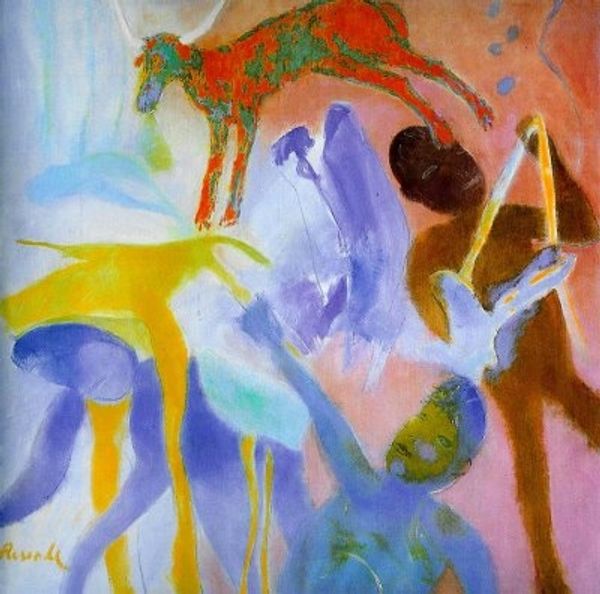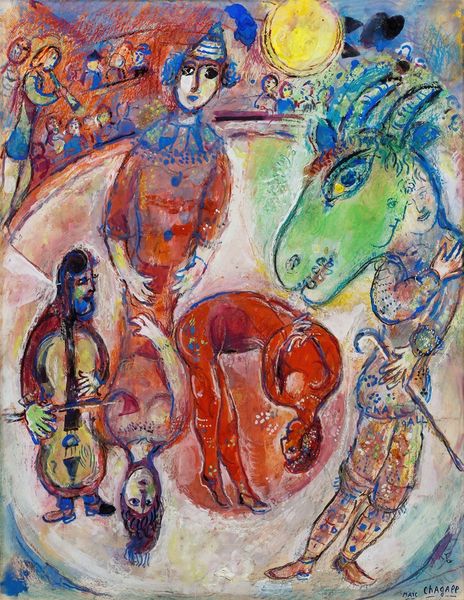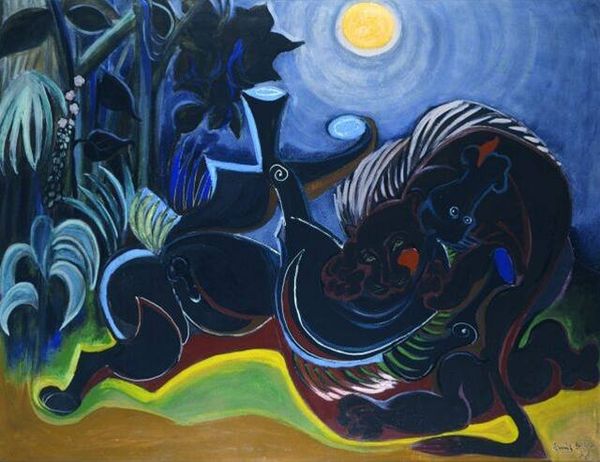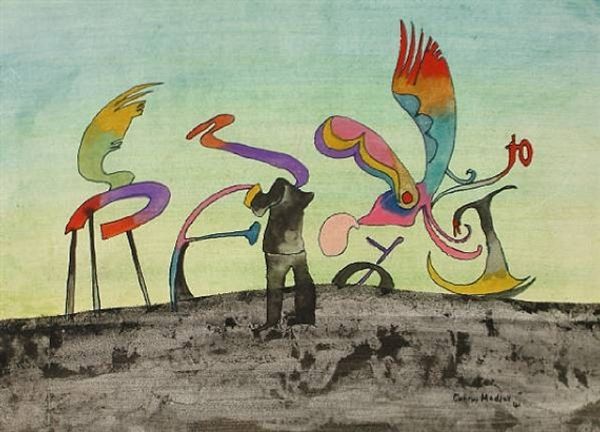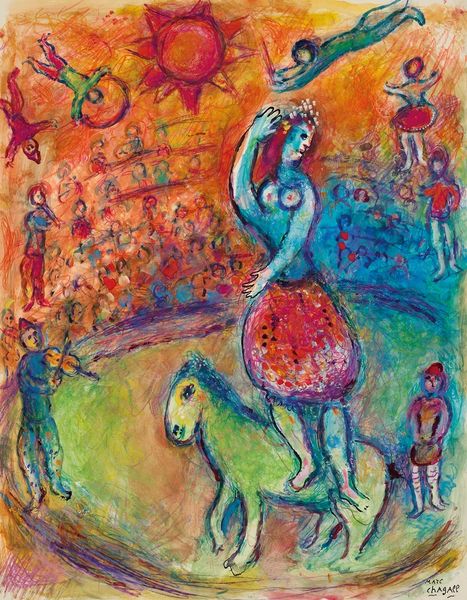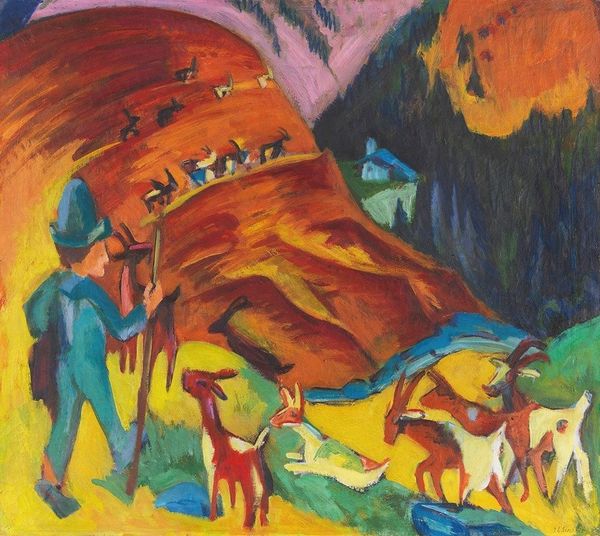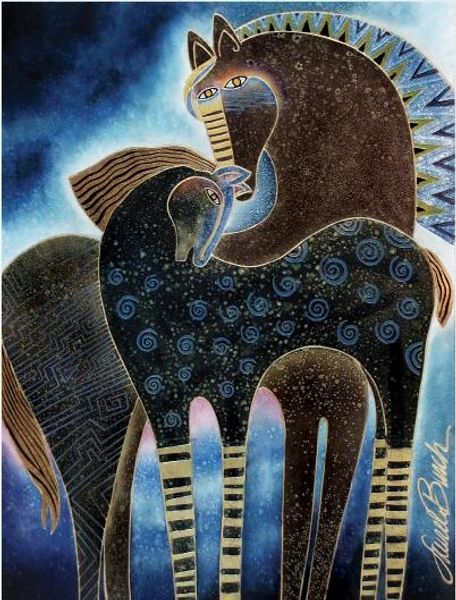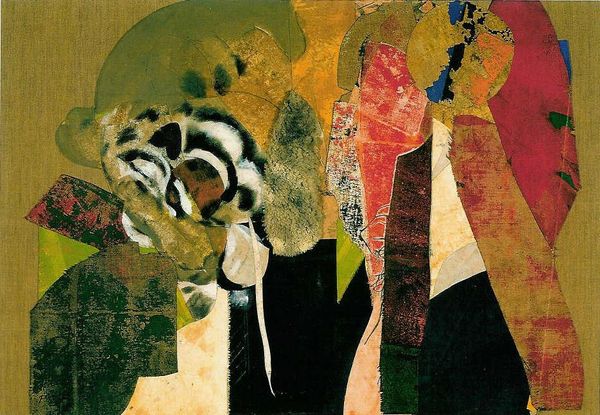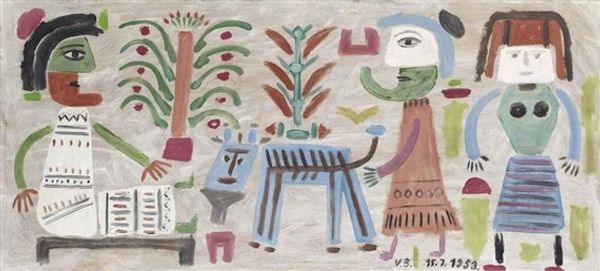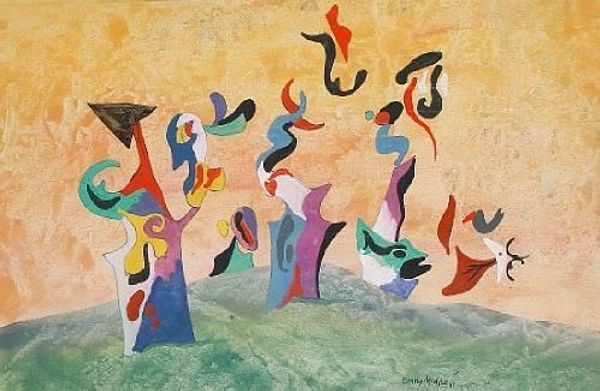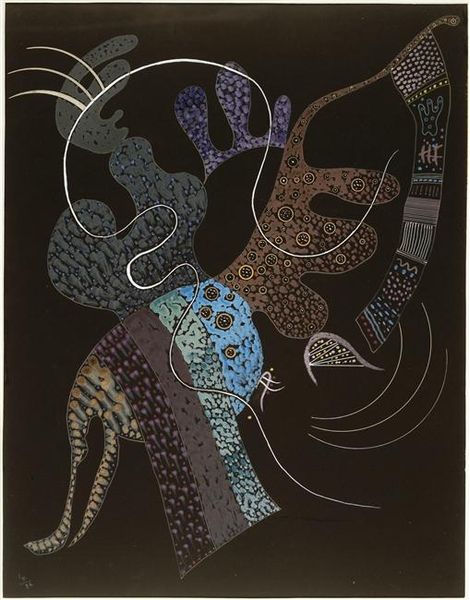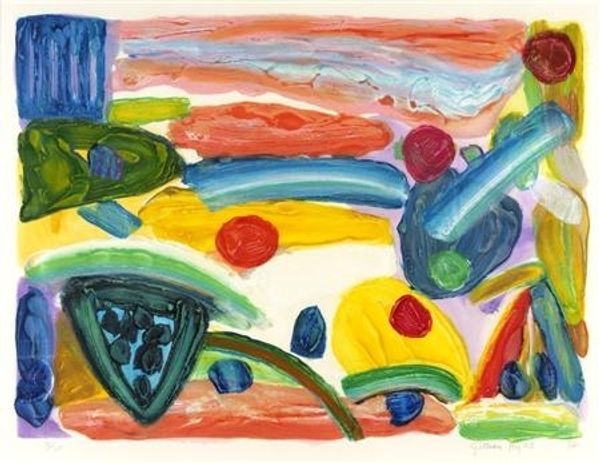
painting, acrylic-paint
#
abstract painting
#
painting
#
animal print
#
acrylic-paint
#
figuration
#
naive art
#
painting art
Copyright: Laurel Burch,Fair Use
Curator: The acrylic painting we are looking at is called "Wild Horses" by Laurel Burch. The artist uses such a fascinating color palette! What are your first thoughts? Editor: I’m immediately struck by the density of the acrylic paint. It's not just the colours—though they're arresting, certainly—but the way the layers build up, suggesting an almost textile quality to the work. Almost like enamel. Curator: I find it incredible, like some memory emerging. Consider the layering: aren't the horses archetypes from a collective dream, from mythic memory? Those prominent eyes, they really look at you. They watch and they judge...or maybe comfort? Editor: Layers absolutely, but what kind of work and choices shaped these acrylic layers? Did she build the forms deliberately with scaffolding or sketch, allowing each section to partially dry? What did she learn and develop throughout the process of producing many acrylic paintings, what shortcuts? Because that informs our understanding of its deeper significance. Curator: A pertinent observation. Those techniques and choices influence its power over us. For example, those intense staring eyes. Eyes looking beyond reality, looking at other beings. Like ancient shamanic traditions using animal spirits, don't you agree? Editor: Shamanic maybe, but what about the market for 'spiritual' art too, the crafting and commodification? That's what comes to mind. And this color palette seems very familiar; there were other mass-produced artists doing similar things. Curator: Possibly so, but it feels naive in the best sense—raw, honest. There’s a pre-modern quality, before such cynicism. A reaching back for lost symbols. Editor: Yet the consistent form feels very… manufactured, and quite a far cry from naïve. And the way the medium seems to mimic textiles… what if Burch tried this technique across several canvases as quickly as possible to feed commercial trends? Curator: So much to unpack from an acrylic. These "Wild Horses" offer an interesting interplay between visual symbol, commercial context, and medium handling, challenging conventional approaches. Editor: It does push beyond the ordinary landscape, though, especially when considering mass production. Always remember that material can still generate a unique image.
Comments
No comments
Be the first to comment and join the conversation on the ultimate creative platform.
